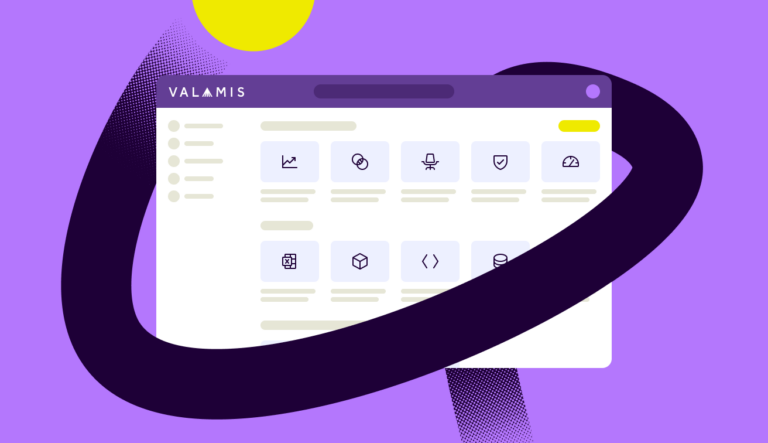Employee development methods
In this article, we examine the 11 most effective methods of employee development, when and how to use them.

In this article, we will cover the 11 most effective methods of employee development.
You will learn when to use them, their benefits and we’ll evaluate which development method works best for which skills areas.
Contents:
- Training
- Task/job rotations
- Coaching
- Mentoring
- Workshops, committees, working-groups
- Simulations
- Conferences
- On-the-job training
- Self-study
- 360-degree performance review
- Career planning
Employees and employers have various ways to go about putting employee skills development into practice.
The overreaching goal is to strengthen employee’s broad range of skills, whether it be flexibility, organizational, creativity, communication or leadership.
Employee development methods
1. Training
This method includes developing employee skills through a combination of lectures, hands-on-exercises, videos, podcasts, simulations, and individual/group-based assignments.
It includes both formal (classroom-based, instructor-led, eLearning courses) and informal (watching YouTube videos, reviewing educational blogs and posts on peer-group forums like LinkedIn or chat rooms, self-study) approaches to skills development.
Each option will be specific to an organization’s needs, and the subject at hand.
For example, a hands-on, instructor-led training may be the best option to teach a detailed process or trade e.g. a complex manufacturing process or preparing a signature dish for a restaurant.
These extremely specific tasks cannot be taught via YouTube or research, which may suffice for more general subjects such as building codes or IT support issues.
Employees must actively undergo training (either paid for by themselves or by the organization) throughout their career to enhance skills they (in consultation with their managers/supervisors) deem necessary for the role they are performing.
However, organizations must also actively support employee skills development for future roles/responsibilities that the company hopes to entrust these employees.
Training is an ideal employee development method when it comes to addressing both Hard (technical) and Soft (communications, conflict resolution, time management) skills.
2. Task/job rotations
Employees could volunteer to rotate roles with colleagues on a shift/team, to put some of those new skills into practice.
Employers can also encourage job rotation as a method for employees, who have indicated their desire to get practical experience, to develop some additional skills.
The goal is to rotate the tasks and roles to learn something new or have a chance to practice what has been learned.
Stretch assignments: This method involves management working with employees to understand where they wish to improve, and then finding assignments for employees to develop those skills.
Typically, the assignments will push the boundaries of an employee’s existing role/responsibility, to expand its scope to include additional skills needing development.
Stretch assignments could either be horizontal (tasking an employee to use additional skills to do more work similar to – though not the same – their existing role), or vertical (extending the scope of an employee’s role to cover down-stream or up-stream responsibilities).
IDEAL FOR:
This employee development method is the best way to train flexibility and adaptability.
It is also great for extending an employee’s technical skills but, depending on the type of stretch goals set, could aid in developing other ancillary skills such as Time Management, Stress Management, and Conflict Resolution Skills.
Everything depends on the role/job for how applicable this is. For example, if you ask a developer to talk/negotiate with clients, he probably won’t be as great as the manager, but at least he’ll gain the project management skill to some extent.
3. Coaching
When talking about various employee development methods and their benefits, we can’t stress the importance of helping employees polish their skills through coaching.
This method of skills development typically involves senior staffers working one-on-one with less experienced individuals.
This can fast-track an employee’s understanding of a variety of topics, but be mindful that this approach can be both times consuming (taking up the assets of seasoned/valuable staff) and result in a clone-like knowledge of the subject – as opposed to an employee learning the subject his/her way or through input from a broad range of coworkers and mentors.
IDEAL FOR:
Depending on the emphasis of the coaching involved, this can be a fast-track way to learning very specific leadership and team management skills. It can also be focused on particular organizational skills.
Coaching is usually a very hands-on approach to skills development and ideal for developing skills like Technical and Analytical skills. Through employer-sponsored coaching camps, employees could also pick up invaluable Interpersonal and Conflict Resolution skills.
4. Mentoring
This method involves senior leaders/management taking junior staff under their wing to help develop important skills that the mentored individual might lack.
The more formal mentoring programs are typically used for senior executive/leadership roles, while less formal structures might be implemented amongst junior management as well.
As with Coaching, be mindful of the time asset, and the even narrower funnel of a one-on-one teaching model.
IDEAL FOR:
Because it requires senior leadership commitment, Mentoring is typically used to develop high-level skills such as Leadership, Strategic Management, Communication, Critical Thinking, and Long-term Vision articulation.
Mentoring isn’t very effective in developing skills required at lower levels of the organizational structure – such as Shop Floor Assistant or Accounting Supervisor. Coaching might be a better method for skills development at those levels.
More experienced employees can mentor less experienced, younger employees and isn’t necessarily restricted to management. It can be done at any professional level and is ideal for communication skills, leadership skills, and organizational skills. It can also be applied to teaching something new or even teaching creativity.
5. Workshops, committees, working-groups
These are methods that give employees an opportunity to interact with peers/colleagues from within and external to the organization.
The benefit here is rich access to similar colleagues (internal) and dissimilar colleagues (external).
This broad range of input and knowledge can be useful in gaining new insights, troubleshooting, and opening up communication on best practices.
This is ideal for communication skills and teamwork but can also be applied to anything else.
Workshops are great for developing a range of soft skills, such as Communications, Teamwork, Presentation, Public Speaking, Networking, and Leadership skills. It can also be used to polish Research and Analytical skills.
6. Simulations
These are becoming very popular due to both how engaging and effective they have become.
In its simplest form, a simulation could be role-playing a customer service interaction, for example, learning how to diffuse an irate and confrontational client in person, or responding to an emergency situation such as mock first aid scenarios.
At its highest level, simulations can involve completely virtual worlds, such as fire rescue or flight training where employees can learn the skills required in a nonconsequential setting.
This is extremely useful in taking conceptual or textbook knowledge and applying it to the real world which gives the employee both the know-how as well as the exposure and comfortability in handling such tasks.
Works for all types of skills. Group simulations can even be utilized to teach social skills.
7. Conferences
Much like workshops and committees, conferences are a useful way to network and gain exposure to a vast knowledge base of both interdisciplinary and outside industries.
Specific sessions are generally available to increase awareness and training of relevant topics, often in a pick and choose a format that can be of interest/usefulness to particular subgroups within an organization.
Dependent upon the conference’s applicability and specificity, they work for all types of skills, including hard and soft skills and personal development. It can additionally assist with communication skills.
8. On-the-job training
Employees who have attended some basic training on a technical skill (whether it be in operating a new machine, or learning new financial analysis methods) will often find on-the-job training a great method to hone those skills.
This is basically learning by doing, which is typically done right after the training.
The main goal of on-the-job training is to provide everything to the employee for self-study while at work. Employees learn how to use something or apply the methods as they complete the assigned tasks.
This is a very popular way to develop employees as companies typically don’t have the time to train every single employee on every single skill especially if that skill does not require specific/advanced knowledge.
IDEAL FOR:
While on-job exposure is typically good for work-specific skills development, this method can also develop a broad variety of employee skills, including hard and soft skills.
These range from technical skills, leadership development, and analytical expertise as well as organizational skills such as time management, multi-tasking, and prioritization.
9. Self-study
This can be accomplished through different methods: reading/researching, taking classes, etc. outside of work hours.
The subject doesn’t always relate to the skills that an organization needs, but rather something new that they believe will improve their performance.
While the time invested for self-study isn’t directly compensated, if an employee purchased a course that will improve his performance, the company should compensate him by paying for that course.
The benefit is that the employee decides what’s of interest, and pursues it independently. Conversely, it is often difficult to motivate employees to spend off-work time devoted to work-related endeavors.
This is a great means to develop creativity and curiosity, as employees will naturally choose topics of interest/passion. Depending on the material studied, however, it could be applicable to all skills.
10. 360-degree performance review
This method involves getting feedback about an employee, from a cross-section of peers, subordinates, supervisors and external vendors, and then identifying skills development opportunities based on those inputs.
For more information on this type of feedback consider this article: Performance Appraisal.
Because of the fairly broad scope of feedback, this method relies upon, it is typically good for identifying skills gaps in people-facing roles, including Conflict Resolution, Communications, Tactfulness, and Interpersonal skills.
11. Career planning
While this method is usually viewed as something that is “employer-driven” – where HR decides which employee should fill what role – it shouldn’t be so!
Employees can also suggest future/alternative career paths for themselves, to their supervisors/managers, and initiate career planning discussions.

Career development plan template
This template helps employees and leaders plan together for career growth: set goals, assess skills, and make a plan.
Download nowBased on a business goals review and organizational workforce assessment (see Employee development plan), employers can identify existing skills that need to be enhanced across the organization, or prospective new skills that the business must acquire.
Through discussions with management, individual employees should then analyze their own strengths and shortcomings, and volunteer to take on some of those roles. Individual career plans can then be mapped out, in consultation with HR, with specific skills development milestones identified for each role.
IDEAL FOR:
When used in conjunction with other employee development methods, Career Planning can help identify and develop a broad spectrum of cross-organizational employee skills.
Typically, Career Planning sessions identify soft skills like Communications, Interpersonal Skills, and Time Management for development in leadership roles, while hard/technical skills manifest themselves for development in front-line rank and file roles.
Read more about Career Development Plan

Build a learning culture: a practical workbook for your organization
Upgrade your organization’s learning culture with clear, actionable strategies to address the challenges.
Download workbook



